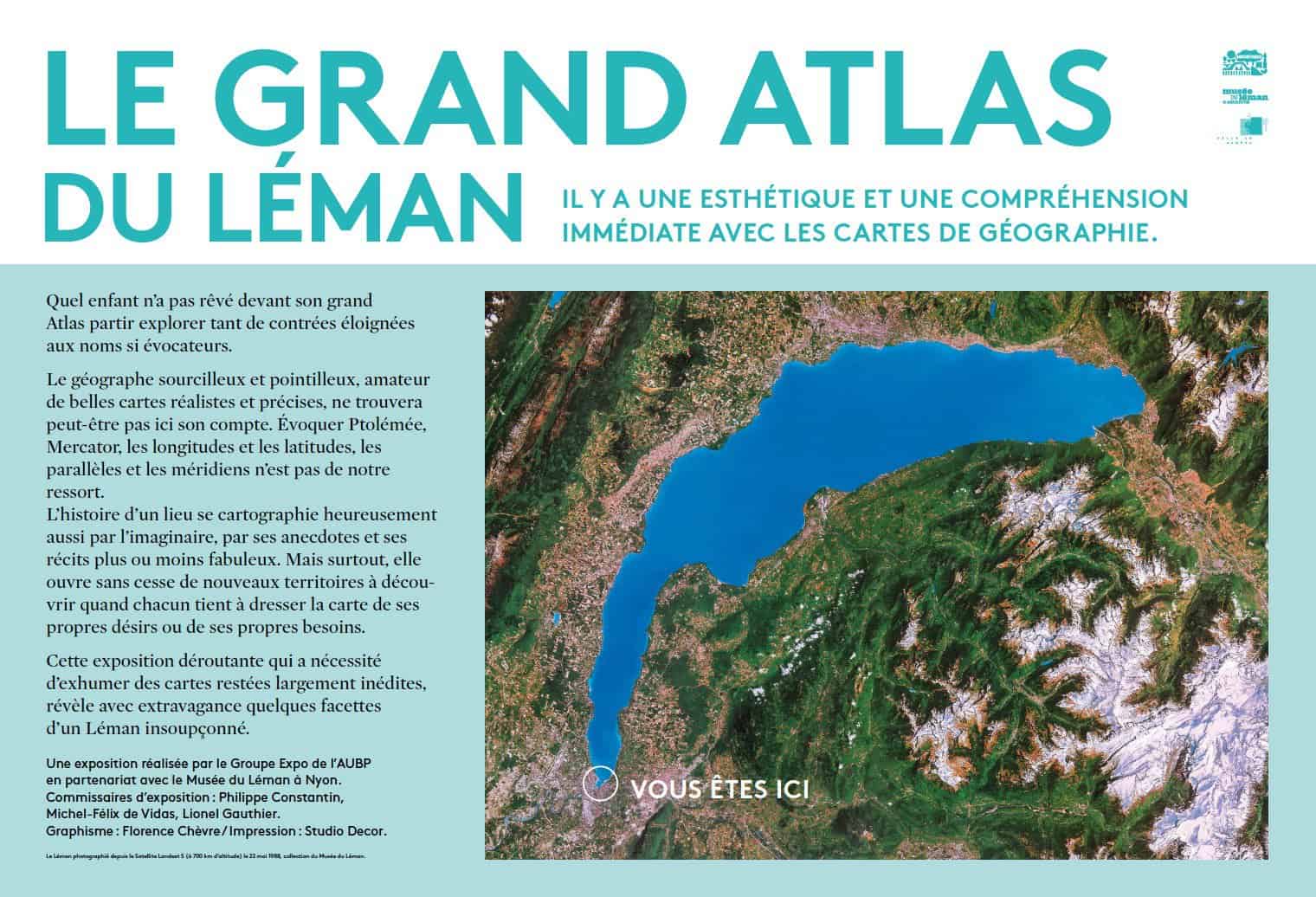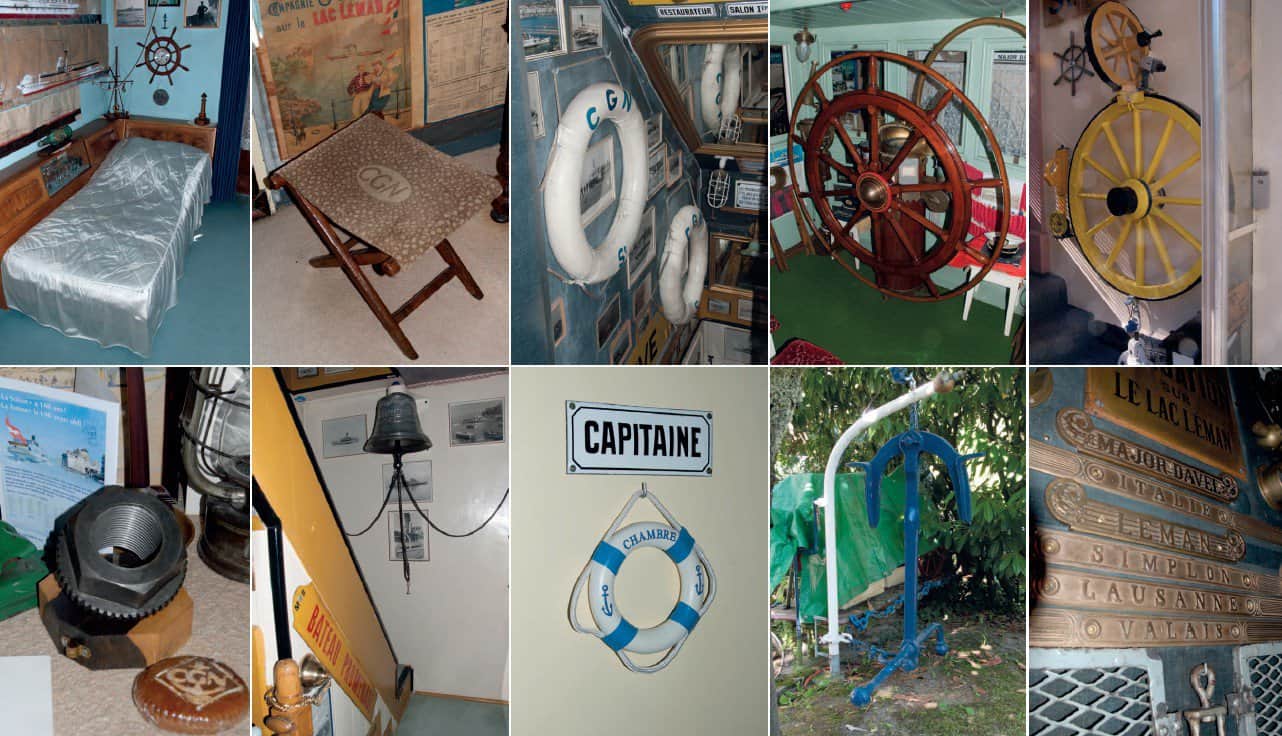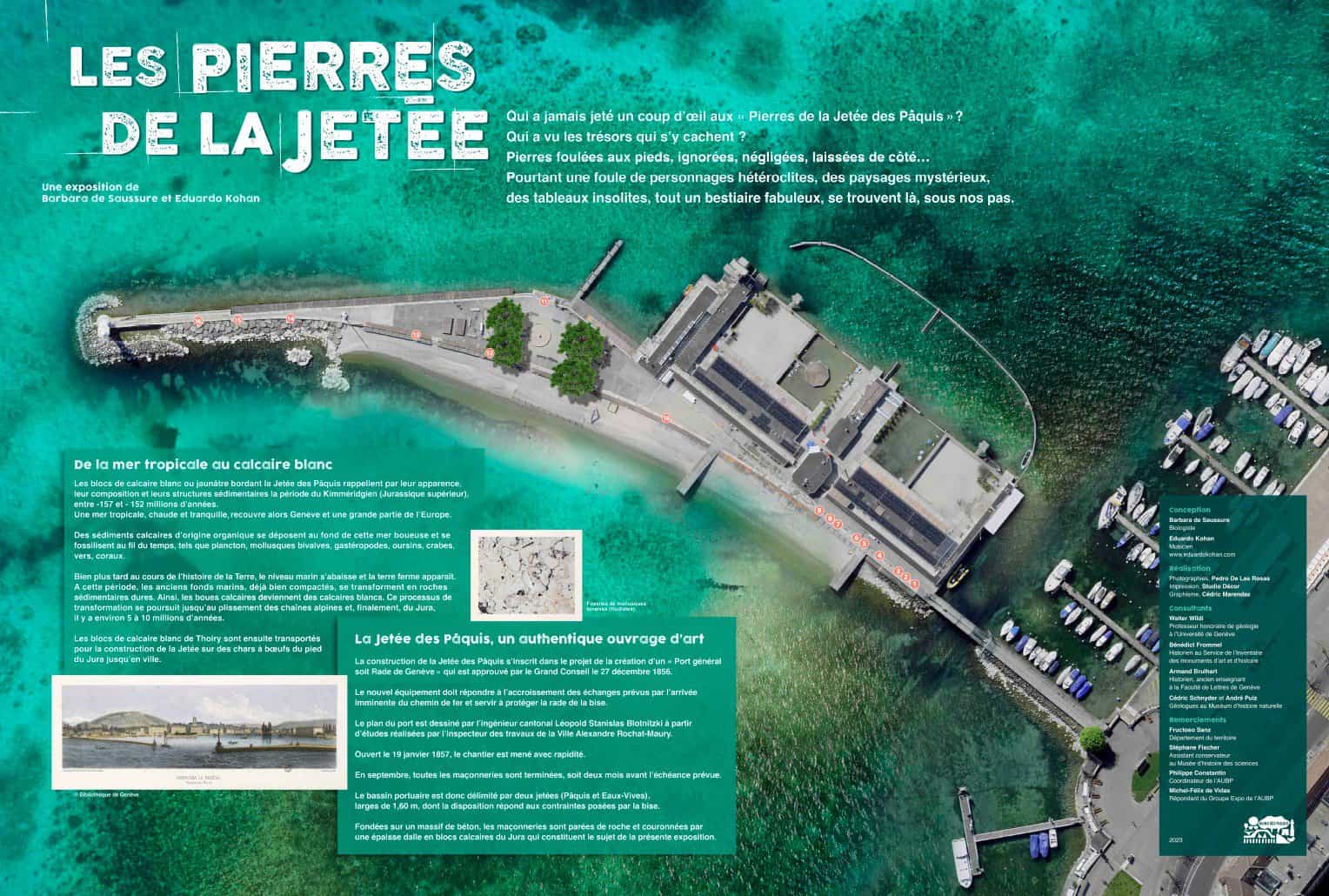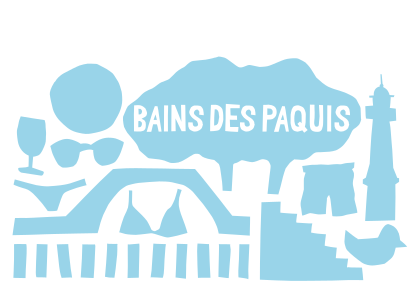EXHIBITIONS
Throughout the year, the pier is transformed to host a variety of exhibitions, often in collaboration with various institutions and Les Bains. The Association des Usagère.ers.x des Bains des Pâquis (AUBP) also plays an active role in this area, creating and producing its own exhibitions. These events focus mainly on subjects relating to Lake Geneva or the history and life of the Spa. Discover our exhibitions below.
Marcel Bolomey
The incredible bestiary of Lake Geneva
A lake monster, an elephant shot with a cannon, an alligator on the loose. Geneva’s last bear. Monkeys immersed in the depths of the lake. A disoriented pink flamingo, wild boars swimming across Lake Geneva and excommunicated eels and leeches. Remarkable animal sightings punctuate the history of Lake Geneva’s waters. Here we present the unique fauna that makes Lake Geneva an extravagance beyond all realities. This exposure is strongly discouraged for those who wish to continue swimming in the lake in peace.

Clap sur Léman IV
Films with Lake Geneva as their backdrop are actually quite rare. Yet Swiss and foreign filmmakers regularly set up shop on the shores of the lake to shoot a few scenes. Directors’ relationships with water vary greatly. For some, it’s just a distant backdrop, for others an integral part of the narrative. Unlike the mountain, which is a character in many films, the lake is not an actor in its own right in any fiction, except in the protean work of Godard, who lived on its shores in Rolle. Strangely enough, despite the presence of many talented directors and dream castings, virtually none of the films shot on Lake Geneva’s waters have been a hit with audiences. These films will be remembered only by cinephiles.

Enchanted journey
Enchanted journey: Amsterdam, Bamako, Geneva… but who knows the song?
Without songs, no places, no stories, no revolutions, no memories nide Love Story. Songs enchant the world, for better and sometimes for worse, as when their heady tunes conceal a racist or sexist vision. Songs recount, bear witness to and, in some cases, transform the world; they are the vehicles of our geographical imaginations. Welcome to this exhibition-game devoted to the relationship between popular songs and places. It is a playful extension of the three books Monde enchanté; Villes enchantées; Voyage enchanté (Editions Georg, 2021, 2022, 2024). We propose an enchanted journey like a treasure hunt, to be followed in the order of your desires.

Labyrinths
Deeply rooted in many civilizations since time immemorial, the figure of the labyrinth has never ceased to fascinate writers and artists. A place for representing space and reading the world, it houses at its heart the Minotaur, a half-man, half-beast creature whose dual nature reflects the bivalent aspect of the labyrinth: exploration and perdition, a structured yet confusing space, whose regularly laid paths nonetheless lead astray…

The Great Atlas of Lake Geneva
What child hasn’t dreamed of setting off to explore so many distant lands with such evocative names in front of his or her Atlas. The fastidious geographer, lover of beautiful, realistic and precise maps, may not find what he’s looking for here. Ptolemy, Mercator, longitudes and latitudes, parallels and meridians are not our domain, but the history of a place is fortunately also mapped by the imagination, by its anecdotes and stories, more or less fabulous. But above all, it constantly opens up new territories to be discovered, as each of us is keen to map out our own desires and needs.
The exhibition, which required the exhumation of largely unpublished maps, extravagantly reveals a few facets of an unsuspected Lake Geneva.

Banquet time
Described as expensive, boring and lacking the advantages of a large capital city when the League of Nations was set up in 1920, Geneva nonetheless had a lot to offer. to meet the demands of international diplomacy. These include grand hotels, parks and gardens. They provide the setting for diplomatic banquets and more informal receptions, such as dinners and cocktail parties. These are all places where socialites and diplomats rub shoulders. These spaces stage and shape representations of a certain “international culture”.

Resurrected treasures of Lake Geneva
The ghosts that undulate at the bottom of the lake, at the mercy of sometimes violent currents, are the guardians of sunken treasures. The magnificence of the wealth accumulated over time by tragic shipwrecks amplifies the legend of a fortune stagnating in the depths. A long and difficult investigation begins. Some objects thought lost will reappear in unusual places. Torn from death, they re-emerge in our world. The surprise of these discoveries is matched by the mystery that surrounds them.
If ghosts are part of the gloomy secret of the deep, the resurrected treasures of Lake Geneva are part of the mystery of resurrection.

The book itself
The Bodmer Foundation’s rare books are yours for the taking.
Organized around five themes – content, size, exhibition, restoration and material – this tour invites you to follow the destiny of exceptional books, from their restoration in the intimacy of the workshop to their public magnificence in the museum’s showcases.Writers, restorers, researchers and passionate bibliophiles are, for photographer Naomi Wenger, the focal points for getting to the heart of books, from their materials to the mystery that surrounds them,










